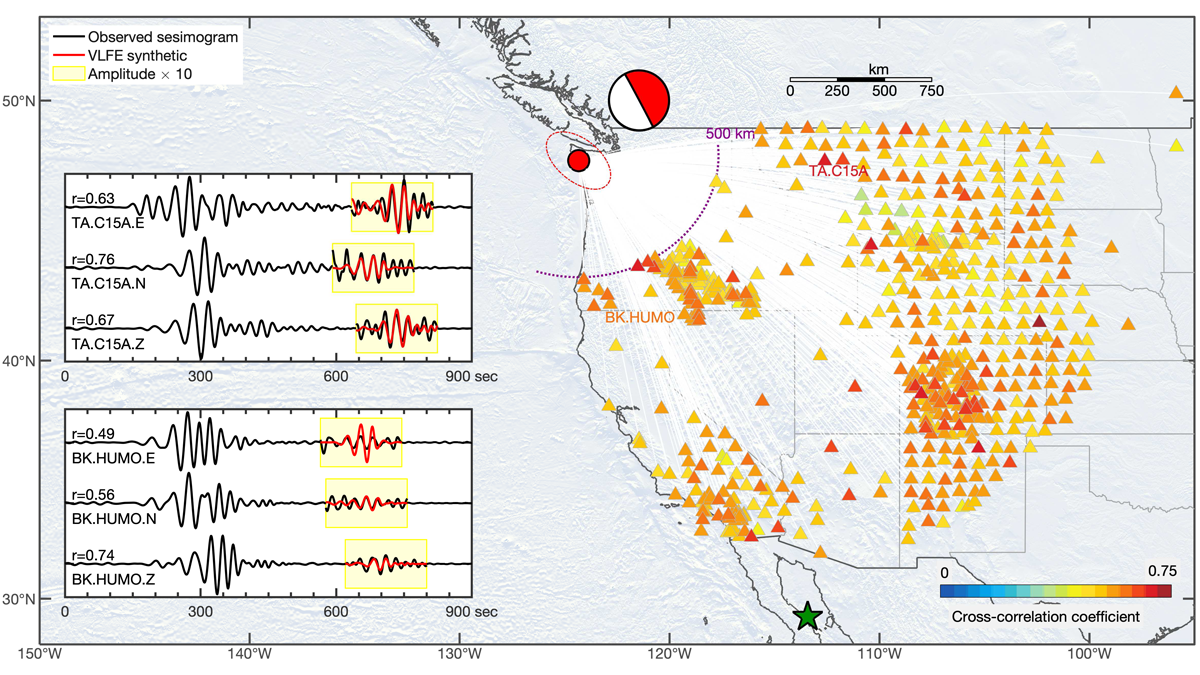Editors’ Highlights are summaries of recent papers by AGU’s journal editors.
Source: AGU Advances
Enhanced geophysical networks have revealed a wide spectrum of fault slip beyond a simple seismic cycle over the last decades. One intriguing region in megathrust plate interfaces lies between the seismogenic zone and the deeper regions where phenomena such as non-volcanic tremor are found, including in the Cascadia margin of the NW United States. It is in this gap where Fan et al. [2022] appear to have detected triggered, very low frequency events (VLFEs) based on a comprehensive analysis of widespread seismometer recordings. Those VLFEs included the largest event recorded globally so far. At magnitude 5.7, it was large enough to be seen in the longer-term crustal deformation recorded by strainmeters, making this also the first geodetic VLFE detection. While the physics of VLFEs and the gap zone remain to be clarified, these new observations provide important constraints on fault stress state and rupture dynamics including potential future earthquakes in Cascadia.
Citation: Fan, W., Barbour, A.J., McGuire, J.J., Huang, Y., Lin, G., Cochran, E.S., et al. [2022]. Very low frequency earthquakes in between the seismogenic and tremor zones in Cascadia? AGU Advances, 3, e2021AV000607. https://doi.org/10.1029/2021AV000607
—Thorsten Becker, Editor, AGU Advances

